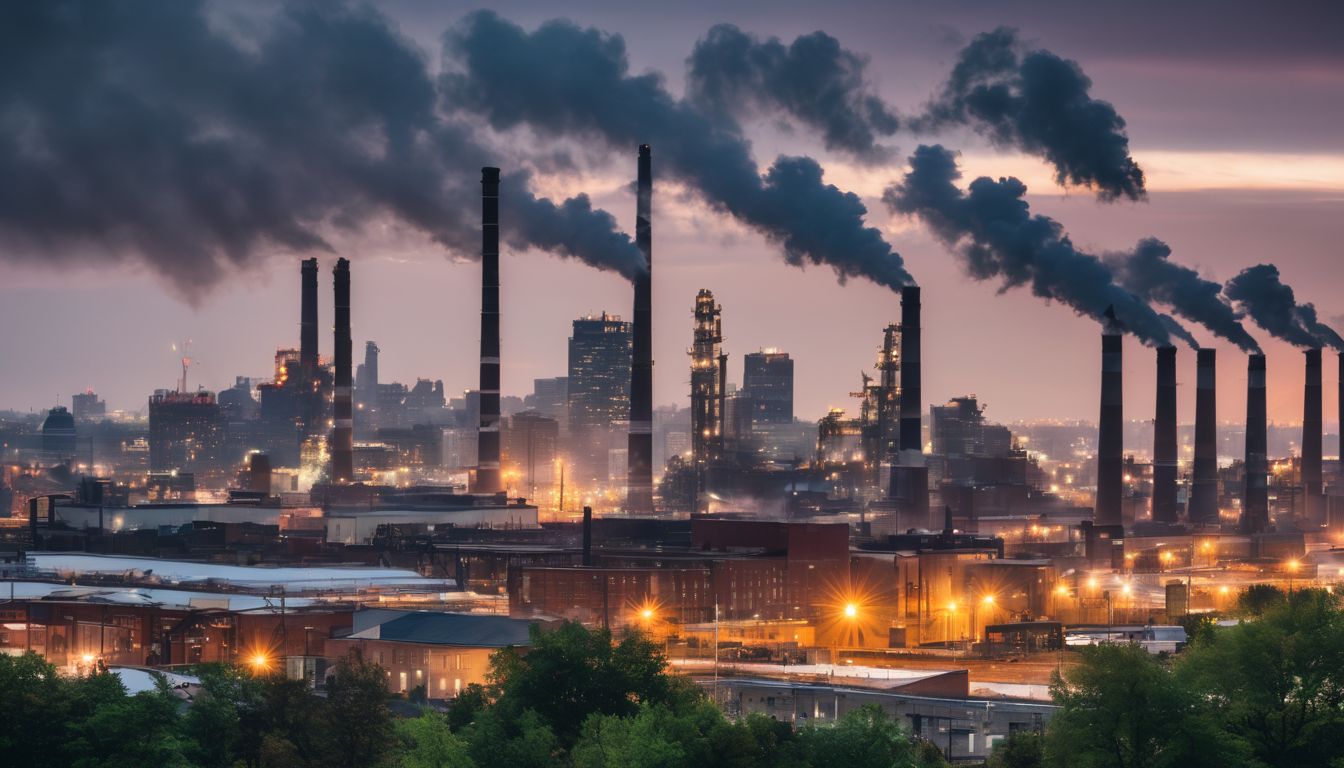This article on Midwestern U.S.
Southwestern United States Climate Change Overview
The two words most people would use to describe the Southwestern United States are dry and hot. Decades of western movies have portrayed this region of the United States as a barren, dry, and dusty region. However, the climate of the Southwest is more complicated than that. While many parts of the region are arid, monsoons are also not uncommon, and the forested mountains and plateaus can be frigid and snowy. Indeed, the fluctuating climate of the region has shaped its development over the last several centuries. Rainy spells and floods led to immigration and the deception that the Southwestern U.S. is a land of plenty. But soon enough, droughts sweep the region. The fall of the indigenous Maya, Moche, and Anasazi civilizations can, in part, be attributed to such droughts. And the dust bowl of the 1930s illustrated that our modern civilization is still susceptible to decades-long drought that affect the region from time to time.
Many scientists point to the Southwest as the region in the United States that has been the most directly impacted by climate change thus far. The flow of the major river system in the region – the Colorado – has decreased rapidly over the last several decades. Spring snowmelt has also fallen off markedly. Water resources in the region were already stressed by population growth, and projections of future climate change indicate that the region will experience “a serious water supply challenge in the decades and centuries ahead.”
Temperature Increases and Heat Waves
Temperatures in the Southwest have already increased by approximately 1.5 F since the 1970s, with some parts of the region a whole 5 to 8 warmer. While this may not seem like that big of an increase, bear in mind that the difference between current average temperatures on the planet today, and average temperatures during the last ice age was only about 12 F. Twelve degrees is all that separates our world from one that had glaciation and mammoths! As if the recent temperature changes weren’t bad enough, the Southwest is projected to continue warming faster than the world as a whole in the coming decades.
Water
Without a doubt, the worst consequence of climate change in the Southwest will be water shortages. The Southwest continues to lead the nation in population growth. This, combined with temperature increases and associated river flow reductions, is sure to increase competition for water supplies in the region. Mark Twain has been attributed with the oft-repeated adage that “Whiskey is for drinking, water is for fighting over” and sadly that may just prove to be true.
In one recent study, researchers found that without prompt action to conserve water, Arizona, California, Nevada, New Mexico, and Utah will face a combined shortfall of 1,815 Million Acre Feet (MAF) of water due to population and income growth. In addition, these states may have as much as an additional 439 MAF shortfall from climate change. The combined cost of such a deficit could be as much as $5 trillion USD in lost crops and drinking water shortages. These numbers may actually be conservative considering that with this year’s mild winter the snowpack in Colorado, Utah, Montana and northern California is less than half the average. This is the lowest it has been in decades.
Aside from drinking and farm water shortages, one other major concern that stems from lack of rain and snowfall is how these states get their energy. In states that use small greenhouse gas (GHG) emissions, thus creating a positive feedback loop of sorts. Climate change leads to more GHG emissions leads to more climate change, and so on.
Fire and Dust
2011 was the hottest year on record in Texas. If what has been happening in that State is any indication, one major effect of drought in the Southwest will be trees dying off and fires. Between 100 million and 500 million trees were lost in Texas last year. And that figure does not include trees killed in wildfires that have scorched an estimated 4 million acres in Texas since the beginning of 2011.
In regions without much tree cover, dust will be the primary nemesis. The Dust Bowl of the 1930s seems a distant, drawn-out nightmare. However, researchers are now warning that over the next two or three decades, the American Southwest will “transition to a climate that may make the 1930s Dust Bowl seem mild and brief.” As temperatures rise, drought will strip away moisture that holds down dust, kill off protective vegetation, and open cracks in the ground that can expose additional dust. Indeed, this process may be underway already. Scientists with the U.S. Geological Survey have found that during warm periods in southeast Utah over the last 20 years, grass and some kinds of shrub cover declined by as much as 8% per degree of rise in temperate. They also predict that the amount of dust in the air could exponentially increase if grass or shrub cover dips below 10-15%.
Effects on Crops and Native Species
Of course, drought, dust, and fire all have profound effects on crops and native wildlife in the Southwestern United States. Indeed, in Texas, the effects of a severe drought last year have already led to an increase in beef prices as ranchers in Texas and Oklahoma are forced to drive cattle north. The US Department of Agriculture expects that cattle prices will rise 29% from the end of 2010 to the end of 2012. Crops will also be severely endangered by a warming climate. In the Southwest, approximately 80 percent of water consumption goes to agriculture. This means that any reductions in water supply will inevitably lead to smaller water allocations for farmers.
Not only does climate change threaten the region’s economic future, it also threatens the native species that are so distinctive to the region. Consider these two telling examples. In Colorado, the aspen trees that are so characteristic of the State and its famous ski resort suddenly started to decline last year. Researchers found that aspens have essentially dehydrated due to a drought that took hold of Colorado from 2000 to 2004. In a delayed reaction to the drought, the systems that carry water through aspen stands broke down. In Texas, scientists fear that the state’s devastating drought could threaten the only self-sustaining flock of cranes left in the wild.
Action Being Taken
Given the Southwest’s vulnerability to climate change, many states in the region have stepped up to sign the Southwest Climate Change Initiative. This agreement establishes a framework for states to collaborate on strategies to address the impacts of climate change in the Southwest and reduce AB 32, the Global Warming Solutions Act, which sets 1990 emissions levels as the emissions limit to be achieved by 2020. Such actions do far more than help the immediate region—they also set a precedent. They prove to other states and countries that taking aggressive steps to limit greenhouse gas emissions is worth the effort, and can actually be beneficial for a state that wants to transition to a greener economy.
The problem in the Southwest, of course, is whether these actions will be enough. The Southwest currently uses 76% of its surface water, a figure that could rise to 86 percent when the region’s population doubles. This amount of water is not enough to support the Southwest’s growing communities and agricultural sector while also leaving enough water in its rivers to support healthy ecosystems. Such a situation is particularly worrisome in a region where tree ring records show that droughts persisting for 50 to 70 years are not unheard of.
The solution, most experts agree, will lie in continued efforts to coordinate climate change and water policy at local, state, and federal levels. If people continue to move to an area that has not traditionally been habitable, they must be willing to accept the development of untraditional water sources, such as reclaimed wastewater. These actions, and some good luck, may be the only way to sustain such a large population in the Southwestern United States




